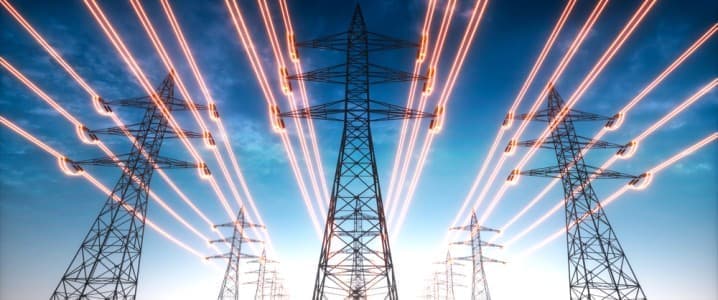
The U.S. has been investing heavily in boosting its battery storage capacity and developing its electric vehicle (EV) battery manufacturing capabilities, and it seems that it has paid off as the country is now home to several massive battery projects with many more in the pipeline. Since the introduction of the Biden Administration’s Inflation Reduction Act (IRA), the most far-reaching U.S. climate policy to date, public and private investment in battery storage has soared, as the country strives for a green transition.
One of the biggest gaps in renewable energy development around the globe is battery storage. As countries worldwide rapidly develop their green energy capacity, mainly through solar and wind power, there is a massive need for more battery storage to ensure these renewable energy sources become more reliable. At present, wind and solar farms only deliver power when the wind is blowing and the sun is shining, demonstrating the need for utility-scale battery storage to be rolled out to provide stable renewable power to consumers around the clock.
At present, California generates by far the most solar power in the U.S., having steadily increased its renewable energy capacity over the last decade. Until recently, solar farms in the state could not deliver a stable flow of energy to consumers due to the lack of battery storage. However, since 2020, California has installed more utility-scale batteries than anywhere else worldwide, except China. These batteries store excess energy generated during daylight hours to deliver to customers at night. Some of the batteries being used across the state are the size of shipping containers, offering an insight into the scale of these projects.
Helen Kou, the head of U.S. power analysis at BloombergNEF, stated “What’s happening in California is a glimpse of what could happen to other grids in the future.” Kou added, “Batteries are quickly moving from these niche applications to shifting large amounts of renewable energy toward peak demand periods.”
The state of California aims to make its grid 100 percent green-energy-powered by 2045, which will be hugely supported by the increase in the state’s battery storage capacity. It is thought the state will need 50 GW of battery storage to support this aim. California plans to almost triple its battery capacity by 2035. Andrés Gluski, the CEO of AES Corporation, explained “If you want more renewables on the grid, you need more batteries. It’s not going to work otherwise.”
Now, California plans to develop one of the largest battery plants in the world, to commence operations later this year. The billion-dollar Nova Power Bank, managed by independent power producer Calpine, is being developed on the site of an abandoned gas-fired power plant project. Once complete, it is expected to provide power for 680,000 households for up to four hours when fully charged. The lithium-ion battery bank will be 680 MW in size and California plans to bring 620 MW of its total capacity online this year in two phases, followed by 60 MW in 2025.
Emily Precht, the strategic origination manager at Calpine, said “This plant will help stabilize the grid, especially for reliability purposes.” Precht added, “When people get home from work and they plug in their electric cars, turn on their dishwashers and air conditioners, there is a high demand for power, (but) not as much solar production. Having something that saves the power from the middle of the day (and) moves it to a higher demand period will help make the grid more resilient.”
The rollout of battery storage has been supported immensely by greater investment in the EV sector. Over the past 10 years, as the EV industry has expanded, the cost of developing lithium-ion batteries has decreased by around 80 percent. The rollout of utility-scale battery storage has been further supported by government subsidies and other financial incentives.
California is not the only state growing its battery storage capacity, with Texas and Arizona also announcing massive new projects. In fact, over the last three years, U.S. battery storage capacity has increased tenfold to around 16,000 MW. The U.S. energy storage industry rolled out 8.7 GW of storage in the first quarter of 2024, showing a year-on-year growth of 90 percent, according to an analysis by Wood Mackenzie. There was 218.5 MW of storage deployed in the residential energy storage market. In the fourth quarter of 2023, California and Texas accounted for 77 percent of fourth-quarter additions of a total of 4.2 GW added across the country.
Texas is also experiencing a boom in battery storage investment as companies such as BlackRock, Korea’s SK, and Switzerland’s UBS offer huge financing packages in the hope of earning double-digit returns from the power grid once renewable energy operations become more reliable. Boosting battery storage is helping to strengthen the state’s grid, which is seen as highly valuable, particularly due to the threat of more regular severe weather events leading to power outages. Texas is expected to contribute almost a quarter of U.S. grid-scale storage over the next five years.
